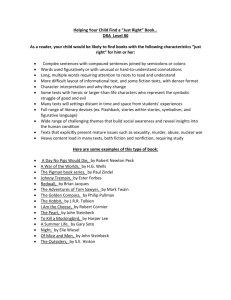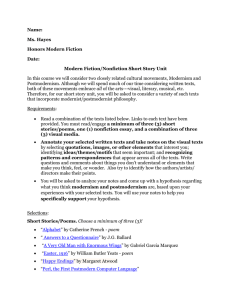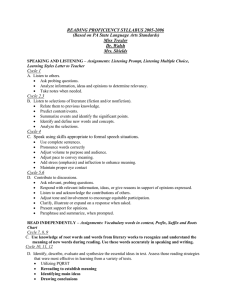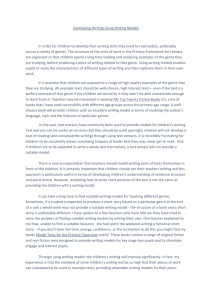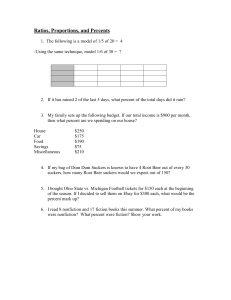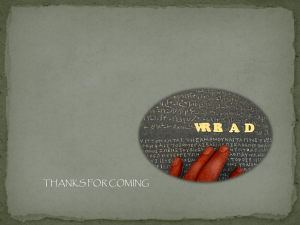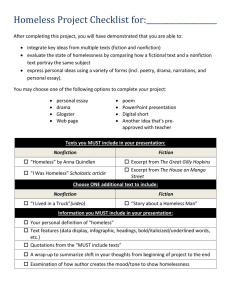Name: Unit 1 Study Guide *For each of the items below, be sure to
advertisement
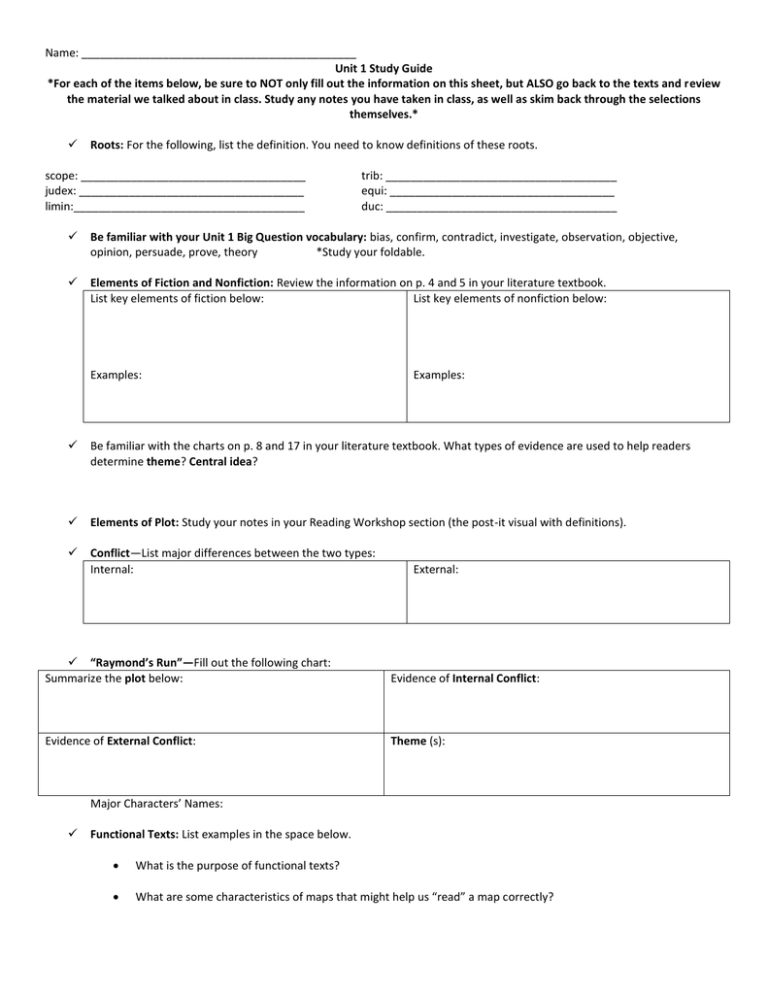
Name: ____________________________________________ Unit 1 Study Guide *For each of the items below, be sure to NOT only fill out the information on this sheet, but ALSO go back to the texts and review the material we talked about in class. Study any notes you have taken in class, as well as skim back through the selections themselves.* Roots: For the following, list the definition. You need to know definitions of these roots. scope: ____________________________________ judex: ____________________________________ limin:_____________________________________ trib: _____________________________________ equi: ____________________________________ duc: _____________________________________ Be familiar with your Unit 1 Big Question vocabulary: bias, confirm, contradict, investigate, observation, objective, opinion, persuade, prove, theory *Study your foldable. Elements of Fiction and Nonfiction: Review the information on p. 4 and 5 in your literature textbook. List key elements of fiction below: List key elements of nonfiction below: Examples: Examples: Be familiar with the charts on p. 8 and 17 in your literature textbook. What types of evidence are used to help readers determine theme? Central idea? Elements of Plot: Study your notes in your Reading Workshop section (the post-it visual with definitions). Conflict—List major differences between the two types: Internal: External: “Raymond’s Run”—Fill out the following chart: Summarize the plot below: Evidence of Internal Conflict: Evidence of External Conflict: Theme (s): Major Characters’ Names: Functional Texts: List examples in the space below. What is the purpose of functional texts? What are some characteristics of maps that might help us “read” a map correctly? “The American Dream”—Fill out the following chart: Genre: Central Idea: Author Purpose: Style/Tone: “Sun Suckers and Moon Cursers” and “Electric Circuits”—Fill out the following chart: “Sun Suckers” “Electric Circuits” Type of Article: Type of Article: Author Purpose: Author Purpose: Possible Purpose for Reading: Possible Purpose for Reading: Brief Summary: Brief Summary: What characteristics of these two texts might readers use to PREVIEW them? “The Adventure of the Speckled Band” Genre: Overall mood of the story: Examples of clues/foreshadowing: Red herrings: Narrative structure of the story: Major Characters’ Names: “Cub Pilot on the Mississippi”—Fill out the following chart: Major Characters: Central Idea: Evidence of Internal Conflict: Evidence of External Conflict: Author’s Purpose: What types or examples of texts do the following? Think genres, subgenres, and specific examples. Inform: Persuade: Entertain: Personal Narrative o What is it? o What are some transitions that show shifts in time and setting? o Study examples of correctly punctuated dialogue. MLA Citations and Formatting: Review your Guide to Research. o How to write a direct quote o How to write a paraphrase o How to do a Works Cited page o How to do parenthetical citation



